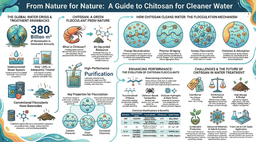Mapping global critical soil moisture threshold of plant water stress
Published in Earth & Environment and Ecology & Evolution
What is the topic in your paper?
This paper uncovers the spatially-explicit global distribution of critical soil moisture threshold (θcrit) of plant water stress and its drivers. Quantifying this threshold leads to a significant progress for identifying tipping points of water stress impairing ecosystem functioning and helps towards a more accurate representation of water stress in land surface models – for understanding plant water stress and recent dryness trends, and for improving future projections of climate and water resources, food production, and ecosystem vulnerability.
What is the critical soil moisture threshold (θcrit) of plant water stress?
The critical soil moisture threshold (θcrit) of plant water stress is defined as the soil moisture (SM) level at which evapotranspiration becomes SM limited in that environment. Below this threshold, both transpiration and evaporation are reduced and ecosystems emit heat, a process that warms the atmosphere. Lab and field experiments have found diverse values for θcrit, but the global distribution of θcrit is not known, due to a lack of global observations. Even less is known about the mechanisms that control the variation of θcrit between regions. Earth system models have adopted parametric representations of soil moisture–evaporation relationships to describe the linkage between the water and energy cycles and predict future climate. However, due to difficulties in observing evapotranspiration globally, these relationships assume different functional forms across models which contribute to divergences and uncertainty in climate, drought and carbon sink projections.
Why does the θcrit matter?
Below the θcrit, a marginal reduction of SM reduces evapotranspiration and increases sensible heat emissions and surface temperature, making the air above the canopy warmer and drier, which in turn further reduces evapotranspiration and plant carbon dioxide uptake. The control of energy partitioning regimes across θcrit determines local climate through land‐atmosphere coupling and can amplify warming during droughts. A better knowledge of θcrit is thus important for land-atmosphere interactions, for climate studies and for understanding the vulnerability of ecosystems and crop yields to drought.
What is the result?
We present the results of a new approach to quantify θcrit based on the diurnal amplitude of the land surface temperature and daily soil moisture measurements during periods of consecutive days without rain, using in-situ flux tower networks and satellite observations from different sensors. Machine learning models are used to gain understanding of the factors controlling the global variation in θcrit, and to establish new empirical non-linear relationships between θcrit and climatic, biotic and edaphic variables.
Our works show that the global average θcrit is 0.19 m3/m3, with a large gradient ranging from 0.12 m3/m3 in arid ecosystems to 0.26 m3/m3 in humid ecosystems. Compared to our observation-based map, θcrit simulated by Earth System Models is underestimated in wet areas and overestimated in dry areas, and models show an erroneous spatially uniform pattern. The global observed pattern of θcrit reflects plant adaptation to soil available water and atmospheric demand. Using explainable machine learning, we show that aridity index, leaf area and soil texture are the most influential drivers. Moreover, we show that the annual fraction of days with water stress, when SM stays below θcrit, has increased in the past four decades. More details can be found in our paper ‘Global critical soil moisture thresholds of plant water stress’ published in Nature Communications.
What is the implication?
Our results have important implications for understanding the inception of water stress in models and identifying SM tipping points. Vegetation regulates the terrestrial water and carbon cycles, as it controls and adapts to changing SM availability, with θcrit being a key variable characterizing the coupling between soil-plant continuum and the atmosphere. Yet our ability to characterize θcrit at the global scale has been limited to date. Based on the dLST–SM relationship from multiple satellite observations, this study provides the geographical distribution and assessment of the variations of θcrit across the globe. We also showed the usefulness of hourly LST data from geostationary satellites to understand ecosystem water stress. By uncovering the relationships between θcrit and environmental factors, including climatic, biotic and edaphic variables, we further added mechanistic understanding of the environmental factors driving the global variation in θcrit. It sheds light on potential tipping points of water stress impairing ecosystem functioning, and future research will aim to use the understanding built based on the map of θcrit and its environmental drivers to improve land-surface model representation of SM constraints on water and carbon cycles. In addition, we showed that the terrestrial ecosystems experienced more frequent water-stress regimes through the past four decades, with important implications on the current land carbon sink capacity. Although the relative patterns of θcrit in some models are similar to those observed, the ten state-of-the-art ESMs that we tested failed to accurately reproduce the magnitude and spatial variability of θcrit, suggesting the uncertain projection of current and future response of carbon uptake and evapotranspiration to droughts. These ESMs need to improve the simulation of SM and related processes, conforming to measurements, to provide more reliable projections of the response of terrestrial ecosystems to climate change and feedbacks between land and atmosphere. Together, these results demonstrated the global distribution of θcrit and its drivers, applications and models’ performance, with important implications for understanding the inception of water stress in models and identifying tipping points of water stress that could result in widespread impairment of ecosystem functioning and loss of ecosystem services with continued climate warming.
Follow the Topic
-
Nature Communications

An open access, multidisciplinary journal dedicated to publishing high-quality research in all areas of the biological, health, physical, chemical and Earth sciences.
Related Collections
With Collections, you can get published faster and increase your visibility.
Women's Health
Publishing Model: Hybrid
Deadline: Ongoing
Advances in neurodegenerative diseases
Publishing Model: Hybrid
Deadline: Dec 24, 2025




Please sign in or register for FREE
If you are a registered user on Research Communities by Springer Nature, please sign in